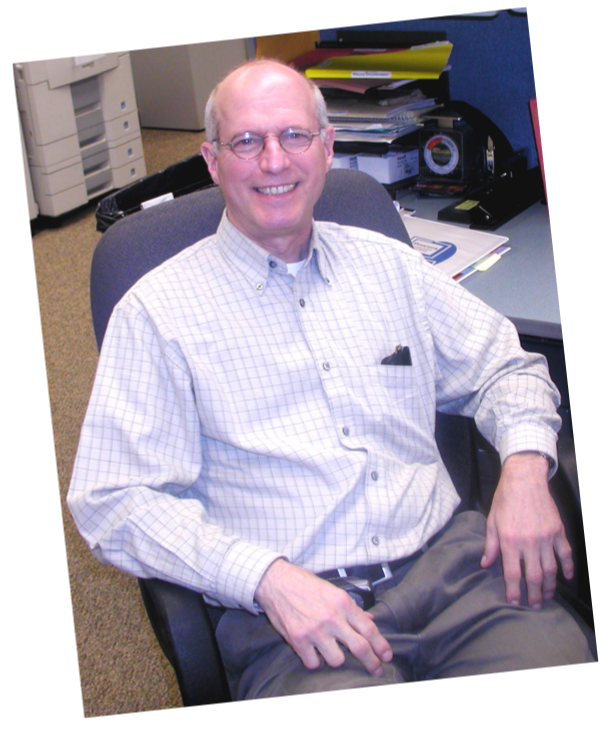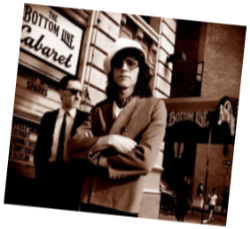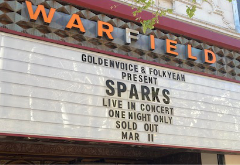
Miscellaneous
MY JOURNALISM JOURNEY
Mind the Gap
Homebridge
It was 2005. The dot-com bubble was imploding. Hordes of young techies who staked their careers on Grow Fast were unemployed. It was not a good time to be job-hunting.
And the playing field was changing. The desktop publishing space was tilting in favor of Adobe, whose flagship Photoshop, Illustrator, and Acrobat products were industry standards.  When Adobe entered the DTP fray with InDesign, it was the death knell for Corel Ventura.
When Adobe entered the DTP fray with InDesign, it was the death knell for Corel Ventura.
Not a problem. Once you learn one program, others come easy.
With InDesign under my belt, I went to user meetings at Adobe’s development center in San Francisco hoping to network. The job leads were few and far between.
It was a young man’s game. I was age 60.
I remember standing on the street downtown looking up at all the high-rises, thinking there's got to be a job behind one of the lit windows. I made the decision to look beyond publishing.
I considered a variety of Craigslist postings. I tailored resumes and cover letters to match demand. I regurgitated talking points in the job descriptions. When that didn’t work, I incorporated buzzwords like “best practices” and used active verbs—“led,” “orchestrated,” and “headed.”
When sober pitches didn’t succeed, I tried sensational: “Get it while it’s hot....”
One of the ads was for an Executive Assistant at In-Home Supportive Services Consortium. Who? What? They didn’t have a web site.
One of the job requirements was operating a stenographic foot pedal. I wouldn’t know a stenographic machine if it hit me in the face. I almost passed on it, but I answered the ad.
Bingo! The Consortium summoned me for an interview.
I got the job.
Lesson: You don’t need a foot pedal, just a foot in the door. Another lesson: The person hiring may be more desperate than you. The previous job holders were of tender age. The agency’s director was looking for someone with maturity.
The job description should have mentioned male pattern baldness.
In-Home Supportive Services, I found out, is another way of saying homecare. The agency—which later took the name Homebridge—had 500-plus workers and served 1500 elderly and disabled clients, referred by the San Francisco Dept. of Aging and Adult Services. The job opened my eyes to the role of social services and the world of eldercare.
My job was to support the Executive Director and her management team, which supported the client case managers, who worked in tandem with service delivery supervisors, who scheduled and managed the caregivers—the hands, faces and voices on the frontlines.
At a nonprofit, you do a little of everything. My title was Executive Assistant. My successor was called Chief of Staff. A better title for our roles would be Chief Cook and Bottle Washer.
Have a skill, use it. See a problem, solve it.
Problem: The agency lacked a web site. Solution: I designed one...then another for the agency’s training academy. I housed the sites on the agency’s servers—no outside costs for web hosting or maintenance.
Problem: Finding documents in the central filing system was like an Easter egg hunt. Solution: I created a database that quickly locates any document by file cabinet, hanging folder, file folder, filename, date, keyword, or assigned number.
Problem: The Deputy Director wanted to keep track of legal advice to avoid redundant consultations. Solution: I created a legal database to record the issues, governing laws, law summaries, legal consultation, contact date, attorney name, attorney title, law firm, business address, phone number, and email address.
Problem: Department heads lacked training manuals for program staff. Solution: I produced soup-to-nuts handbooks with information culled from office forms, memos, and emails.
Problem: Leadership needed short-run brochures for recruitment, advocacy, and community outreach. Solution: I designed easy-to-edit tri-folds that could be printed in-house as needed—no ordering from the outside.
I was Chief Cook, Bottle Washer, Webmaster, Database Programmer, and Instant Printer. Also Writer, Editor, and Desktop Publisher—handy skills when it came to assembling contract proposals.
The contract process—RFPs (Request for Proposals)—was a BFD (Big F-cking Deal). The agency’s existence hung in the balance. The City wanted everything: agency history, budget proposals, projected goals, past outcomes, technical capability, org charts, resumes, job descriptions, audit reports, support letters.
In as few words as possible. Single-spaced. Double-sided. Paginated. Hard copies. Digital version. On deadline. Not a day sooner. Not a minute later.
I was no stranger to deadlines. In fact, I had a deadline of my own.
Something called retirement.
On November 30, 2015, I reached the end of my journey. From paperboy. To reporter. To production geek. To problem-solver.
I made it to the final destination.
I stood clear of the closing doors.
I minded the employment gaps.
POSTSCRIPT
The Beat Goes On
A press card can get you front-row center for a rock concert. I was a reporter and a rocker, but I never wanted to be a reviewer.
Reviewing is work. I consider concerts play time. Rock of Ages—Confessions of a Concert Junkie will attest to that.
While others at the Post covered the pop scene, I was a paying customer at venues large and small—Bottom Line, Bitter End, Max’s Kansas City, Fillmore East, CBGB, Beacon Theater, Capitol Theater, Madison Square Garden, Felt Forum, Wollman Rink, and the Academy of Music—My Home Away from Home.
Jan Hodenfield, a former Rolling Stone writer who came to the Post, discovered that I had a rock-'n'-roll addiction. He asked me to suggest names for a series profiling under-the-radar rockers.
One the groups on my list was Sparks, an artsy band fronted by singer Russell Mael and keyboardist Ron Mael. I saw them at the Bottom Line in 1976.
They didn’t make the cut for Jan’s series, but 25 albums, 345 songs, and more than four decades later their career was chronicled in The Sparks Brothers, an Edgar Wright documentary about a band famous for not being famous.
The documentary introduced them to a new generation. Now septuagenarians, they’re flying above the radar:

The 2022 US concert tour sold out the 2,300-seat Warfield Theatre in San Francisco and other big city venues, including two sell-outs at the 1,500-seat Town Hall in Manhattan.
Last time Sparks visited San Francisco—in 2018—they performed unplugged at The Chapel, a 300-seat mortuary-turned-nightclub.
Three years earlier, they performed in L.A. with a 38-piece orchestra.
The Sparks brothers minded the gaps.
Here's some of their music to take us out:
Videos:
• Dick Around
• The Number One Song in Heaven
• When Do I Get To Sing My Way
• I Married Myself
• iPhone
Live performances:
• Rock, Rock, Rock
• My Baby’s Taking Me Home
• Amateur Hour (from hour-long DVD)
• Dick Around (unplugged encore)

Mind the Gap
Part I: Beginnings
• Paperboy
• High School
Part II: College
• Michigan State
• Northwestern
• Peace Corps
Part III: Big & Small
• New York Post
• VW-XYZ
• GUIDEBOARD
Part IV: Nuts & Bolts
• Consumer Reports
• McGraw-Hill
Part V: ➧ Homestretch
• Homebridge
• Postscript